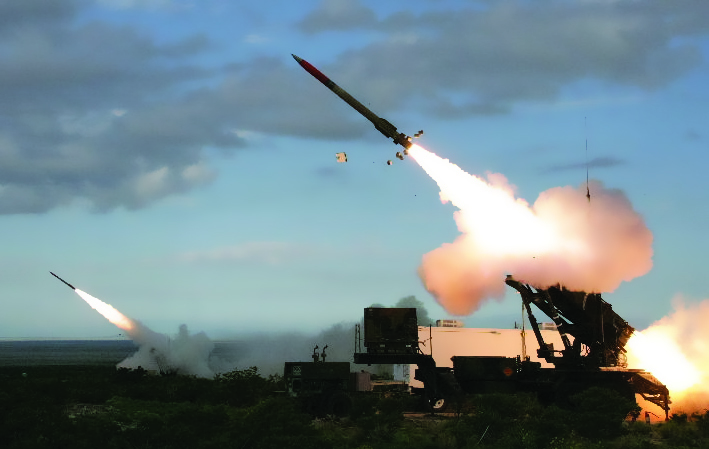With the Ukraine invasion anniversary as a backdrop and a NATO summit coming up this July in Lithuania, the former commander of U.S. Air Forces in Europe argued for integrating air defense and missile defense systems and network and enhancing the responsiveness of U.S., NATO, and partner defenses.
Speaking at a roundtable discussion of the Missile Defense Advocacy Alliance, a non-profit organization in Alexandria, Va., retired Air Force Gen. Jeffrey Harrigian said Russia’s war in Ukraine offers important lessons for thinking ahead about integrated missile and air defenses.
“This idea of integrating [these] by design was fundamental to being able to posture ourselves appropriately when the Russians finally invaded,” Harrigian said, recalling the leadup to the start of the war a year ago. “That same type of mentality is what we need to keep driving on as we go from, not just air defense from the air domain perspective … [and] the basics of missile defense to integrated air and missile defense.”
Harrigian said integrating those systems requires modernizing legacy infrastructure and ensuring critical components are upgraded and ready to operate when needed. Integration also depends on different entities agreeing to share information and access.
“I think we need to start with the fundamentals, get those right, and then … you bring in the right commercial entities that are able to work through the NATO process,” he said. “Because as you do this, one of the key challenges is going to be the policy piece of what the nations are willing to share.”
Events like the invasion can act as a “forcing function to drive some of this change,” he said, accelerating with urgent needs.
“It’s challenging,” Harrigian said. “You get a little bit into the bureaucracy of NATO. But my belief is the time to do that is now, and we can’t keep admiring this problem.”
Once partner nations are in general agreement on the need, it’s time to conceptualize the “operational design,” he said. That’s where the players commit to their responsibilities and an organization in which leaders and contributors are clearly defined.
“Some of the northern tier nations have spent a lot of time thinking about this,” Harrigian added. Implementation is largely a policy discussion, which must be implemented through software to enable rapid data sharing with appropriate, pre-defined rules.
Harrigian was joined by retired Navy Rear Adm. Mark Montgomery, former Deputy Director for Plans, Policy, and Strategy at U.S. European Command, who agreed that leaders must draw the right lessons from the Ukraine conflict, including takeaways from how Russia has prosecuted its attack.
“When Russia got in trouble in their ground offensive—when Russia’s ability to conduct large-scale ruble warfare faltered, when their cyberattacks weren’t properly synchronized to have the effect they needed—they turned to the old trusty cruise and ballistic missile [attacks],” Montgomery said. “They’ve stayed on that tune for nine months now. We’ve absolutely got to understand … their heavy reliance on cruise, ballistic, hypersonic missiles and drones is something we have to prepare for—we being NATO and the United States.”
Riki Ellison, the Missile Defense Advocacy Alliance’s founder and chairman and the moderator of the discussion picked up on that point: “Because Russia didn’t get air superiority over Ukraine, it drove their missile attacks, it drove their motivation,” he said. “And if you assume that Russia will never get air superiority over NATO, their effective way to come at NATO is going to be missile movements.”
Montgomery agreed, saying that NATO members must prioritize their integration strategy, because policy hang-ups among and allies can slow things down. To succeed, members must commit to “a belief of ‘integrated and interoperable now.’”
Among allies, a diversity of equipment makes that harder, imposing interoperability requirements that add complexity to the challenge. Germany’s supply of Gepard guns to Ukraine, Montgomery said, has proven effective against Russian drones. But when more ammunition was needed last in April, the Swiss supplier was blocked by Switzerland from delivering it. The lesson, Montgomery said: “Make sure your munitions … are being built in NATO countries that are going to contribute them.”
That same theory applies to the weapon systems themselves once allies define a policy and architecture to follow, Montgomery said: “Make sure that when you buy a weapon system it meets that architecture that supports the policy.”
